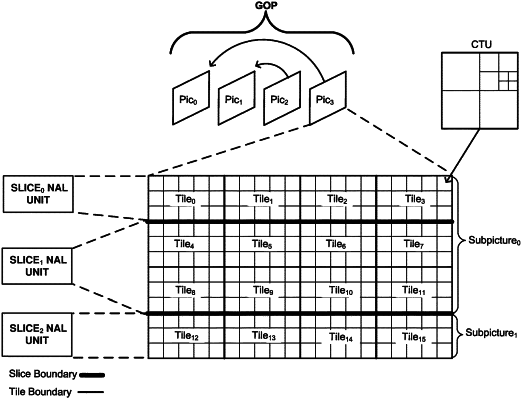| CPC H04N 19/70 (2014.11) [H04N 19/119 (2014.11); H04N 19/159 (2014.11); H04N 19/174 (2014.11)] | 3 Claims |

|
1. A method of decoding video data, the method comprising:
receiving a video parameter set;
parsing a first syntax element in the video parameter set, wherein the first syntax element plus one specifies a maximum allowed number of layers in each coded video sequence referring to the video parameter set;
determining whether a value of the first syntax element is greater than a threshold value;
parsing a second syntax element in the video parameter set, based on a determination that the value of the first syntax element is greater than the threshold value, wherein the second syntax element plus one specifies a number of profile_tier_level( ) syntax structures in the video parameter set, wherein the second syntax element is an 8-bit unsigned integer;
parsing a third syntax element in the video parameter set, based on the determination that the value of the first syntax element is greater than the threshold value, wherein the third syntax element plus two specifies a total number of output layer sets specified by the video parameter set, wherein the third syntax element is an 8-bit unsigned integer; and
deriving a first variable by using (i) the first syntax element and a second variable or (ii) the third syntax element and the second variable,
wherein:
in a case that a value of the second variable is equal to 4, the value of the second variable is equal to 0 or the value of the second variable is equal to 1, the first variable is set equal to a value of the first syntax element plus one,
in a case that the value of the second variable is equal to 2, the first variable is set equal to a value of the third syntax element plus two, and
the second variable is derived based on a value of a fourth syntax element.
|